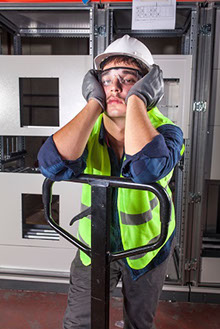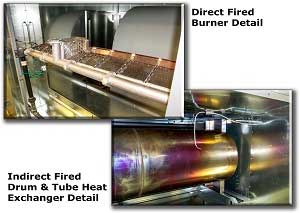6 Actions You Must Take to Prevent Mold Growth in Commercial Buildings

5 Tips to Win the Bid on Shooting Range Ventilation Projects

Under Pressure: Is Building Air Pressure Really Important

We’ve all heard stories about businesses being forced to shutdown due to toxic mold growing in a commercial building causing workers to suffer from respiratory problems. As a result, business comes to a halt and the company executives face serious legal action.
Because of the serious health repercussions to workers and the potential negative impact on a company’s bottom line, it’s important to implement a process that will prevent mold growth in commercial buildings.
Mold counts are higher in humid conditions than dry conditions and some mold is always present, even indoors. Commercial HVAC systems control climate and moisture in buildings, which in turn prevents mold growth. Poorly maintained commercial HVAC systems can serve as both a laboratory for growing mold and a highway system for transporting mold spores throughout a building.
The good news is that interior mold can be controlled through regular commercial building maintenance and inspections combined with the proper design, installation, and maintenance of commercial HVAC systems. But first, here’s a short primer on mold:
Where does mold come from?
Mold can grow on a variety of materials, including drywall, carpeting, fabrics and wood. Commercial buildings designed to maintain a consistent interior temperature provide favorable conditions for mold growth. When the temperature outside plummets and indoor air is heated, condensation can form on windows producing moisture. Too much interior moisture creates an environment in which mold thrives. As mold grows it releases a huge number of spores, which are tough and can survive freezing and drying.
What’s wrong with mold?
Molds aren’t all bad. In fact, some molds are actually used to make delicious cheeses and lifesaving drugs like penicillin. What commercial building managers are concerned about is interior black mold, which can become an ugly nuisance, and cause serious illness in humans and structural damage to buildings.
Some workers are sensitive to mold in the workplace and have allergic reactions when exposed to mold spores. Inhaling or touching mold or mold spores can cause allergic reactions such as coughing, sneezing, nasal stuffiness, eye irritation, and skin rash. Workers who are extremely sensitive to mold or have asthma, are more prone to the building related illnesses mold can cause. The U.S. Environmental Protection Agency (EPA), reports that molds have the potential to cause serious and, in some cases, life-threatening illness by producing allergens, irritants, and in some cases, potentially toxic substances called mycotoxins. In short, interior mold is nothing to mess around with and can have drastic effects on the productivity and health of your workforce.
Controlling Indoor Mold
With a basic understanding of mold, it’s easy to see how poor building maintenance and poorly maintained HVAC systems could contribute to mold growth in commercial facilities.
Mold is typically considered a problem when it is visible, but at that point a commercial building’s air quality has already been compromised. By understanding the conditions that cause mold to thrive and spread, you can prevent mold growth in commercial facilities.
The best way to prevent mold growth is to reduce moisture with a regular building maintenance and inspection process. Here are some strategies for controlling interior mold:
- Inspect all areas of the building for moisture, mold, and water damage routinely. Mold is sneaky.
- Repair any leaks or water damage you discover as soon as possible.
- Clean HVAC system coils and drip pans regularly. Pans that are plugged and not draining properly cause moisture to accumulate, quickly becoming a breeding ground for mold.
- Make sure that all HVAC ducts and system components such as air handlers, blowers, and any enclosed chambers are free of any moisture.
- Perform proper housekeeping in all areas of the building keeping walls and floors dry.
- Check the location of HVAC air intakes. Air being pulled in from areas near standing water or dumpsters can cause an increase in fungal spores inside the building.
If you have a mold problem already, cleaning up the surface will not solve the problem. You need to have someone specifically trained in the principals of commercial mold removal to get it all. You may want to hire a commercial mold remediation specialist. Once the mold is removed, create an inspection process that incorporates a routine commercial HVAC maintenance plan to prevent future mold problems.
Remember, in addition to building maintenance, properly designed, installed and maintained commercial HVAC systems go a long way toward preventing indoor mold problems.




